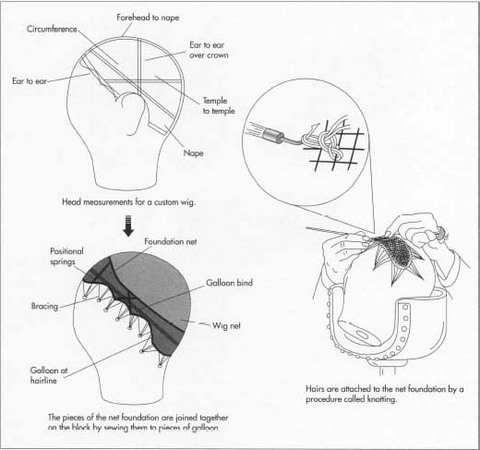By the early 1900s, jute fibers were being used as imitation hair in theatrical wigs. Today, a favorite material for theatrical wigs, particularly those worn by clowns, is yak hair from Tibet. The hair of this ox species holds a set well, is easily dyed, and withstands food and shaving cream assaults. Wigs of synthetic […]
Monthly Archives: April 2020
Hair-loss prevention depends on the underlying cause. Good hair hygiene with regular shampooing is a basic step but is probably of little benefit. Good nutrition, especially adequate levels of iron and vitamin B, is helpful. Treatment of underlying medical conditions like thyroid disease, anemia, and hormonal imbalances may useful in prevention.
Women lose hair on an inherited (genetic) basis, too, but female pattern hair loss tends to be more diffuse, with less likelihood of the crown and frontal hairline being lost. Although some women may notice hair thinning as early as their 20s, the pace of hair loss tends to be gradual, often taking years to […]
There are many options and alternative cosmetic treatments for hair loss. Some of these are listed here and include hair-fiber powders, hairpieces, synthetic wigs, human hair wigs, hair extensions, hair weaves, laser, and surgery. Hair-fiber powders: Colored, powdery fiber sprinkles are commercially available and may work to camouflage balding areas. These colored sprinkles have special properties […]
There are few scientifically proven and FDA-approved treatments for hair loss. There are thousands of unproven claims and products to help with hair regrowth. Many conditioners, shampoos, vitamins, and other products claim to help hair grow in some unspecified way. Nioxin has been a popular brand of shampoo for hair loss, but there is no […]
This type of alopecia is often attributed to genetic predisposition and family history. Androgenic alopecia appears in both men and women. The hair loss in men is often faster, earlier onset, and more extensive. Doctors refer to common baldness as “androgenetic alopecia” or “androgenic alopecia,” which implies that a combination of hormones and heredity (genetics) […]
Under normal conditions, scalp hairs live for about three years (the anagen, or growing, phase); they then enter the telogen, or resting, phase. During the three-month telogen period, the hair root shrivels up into a small “club,” then the hair falls out. It is therefore normal to lose about 100 hairs every day, more of […]






